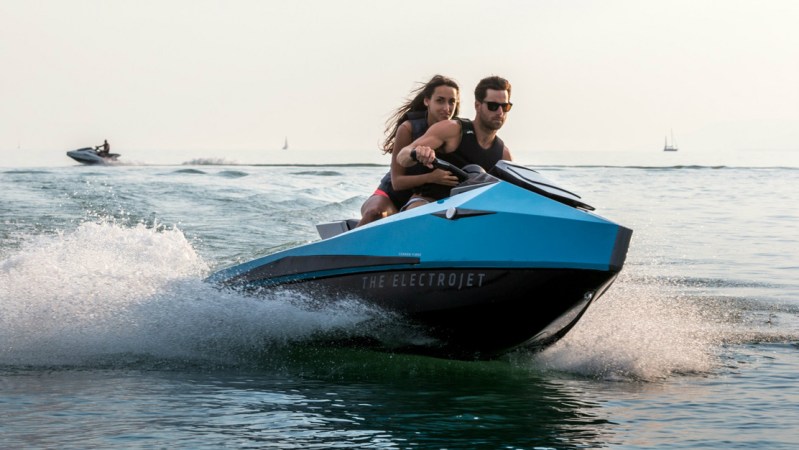The Narke Electrojet is an electric jet ski that promises to eliminate the hazardous chemical emissions typically given off by personal watercrafts (PWC).
Narke replaces a traditional jet ski engine with a 45-kW electric motor and lithium-ion battery, protecting the water and shoreline from exhaust fumes and oil pollution. Research from the late 90s proves that just two hours of exhaust emissions from a PWC is equivalent to driving a 1998 automobile 130,000 miles. Yeah, not good.

Not only does Narke drive cleaner than a ’98 car, it also looks sexier. Imagine a futuristic jet ski with smartphone integration and digital dashboard, suited for the likes of suave 007 chase scenes and Bruce Wayne vacations.
The not-so-sexy aspect of the Narke is the fact that its throttle peaks at just 35 miles per hour.
Yes, 35 mph feels faster on water than it does on land, but die-hard jet ski fans might be a smidge underwhelmed. Narke is not marketed, however, as a speed machine. Instead, its website says, “you cruise slowly on your Narke,” as the Electrojet was also designed to be nearly silent compared to the arrogant vroom-vroom of normal jet skis.
Narke was also made to be used with a wakeboard, where a driver can take out another adult or two kids for wave-riding. One half of Narke’s marketing makes it seem like the green jet ski was designed for rich guys and their beach babe (a la every ’80s movie ever made), but Narke is making a point to say their Electrojet is suitable for family members and kids as well.

One charge lasts roughly 1.5 hours. Which isn’t bad, given the fact that you’re doing this emissions-free. Recharging the battery takes about two hours, but that gives you a break to hydrate, refuel, and get back on the water. However, if you’re itching to make waves again, check your smartphone to get a percentage-by-percentage update on how fast it’s juicing up.
All the smartphone integration capabilities are not yet set as Narke isn’t available for purchase … but they’re getting close, with a probable price tag of €44,000. The Electrojet has undergone test drives and is moving fast to become the first of its kind silent and clean-emission electric PWC. Free Form Factory announced a similar concept in 2017, but nothing has hit the water quite yet.
Narke (based in Balatonvilágos, Hungary) says they conceived the idea a few years ago when György Tóthfalussy and Péter Rádi combined their engineering power and clean-energy passions with György Juhász and Ákos Réder, who designed the electric-navigation COMO yacht.
By the way, though, you can sail the world in this solar zero-emissions yacht.
Now it’s a race to become the No.1 Electrojet, and the tortoise Narke might win over the hare.


